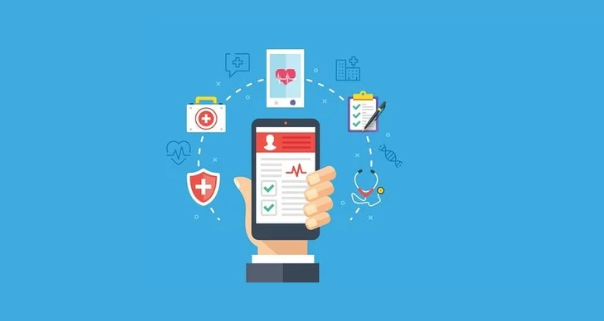
Telemedicine services have become increasingly popular over the years, especially since the onset of the COVID-19 pandemic. Telemedicine has emerged as a convenient and accessible way for patients to receive medical care. As the popularity of telemedicine continues to grow, it’s essential for healthcare providers and patients alike to understand the intricacies of billing for these services. We will provide you with an easy-to-use guide on billing for telemedicine services.
What is Telemedicine?
Telemedicine is the practice of providing medical care remotely, using telecommunications technology. It allows patients to consult with healthcare professionals via video calls, phone calls, or secure messaging platforms, eliminating the need for in-person visits. Telemedicine has become particularly valuable in situations where physical access to healthcare providers is limited or during times of crisis, such as the COVID-19 pandemic.
Billing Basics for Telemedicine Services
Billing for telemedicine services may seem complex, but with the right information and tools, it can be straightforward. Here are the fundamental steps to billing for telemedicine services:
Verify Insurance Coverage
Before providing telemedicine services, it’s crucial to verify the patient’s insurance coverage. Some insurance plans may cover telemedicine visits, while others may not. You can check with the patient’s insurance company or use online tools to determine coverage eligibility.
Use the Right Codes
Billing for telemedicine services requires the use of specific Current Procedural Terminology (CPT) and Healthcare Common Procedure Coding System (HCPCS) codes. These codes identify the type of service provided. Common codes for telemedicine include:
CPT Code 99201-99215:
Evaluation and Management (E&M) codes for outpatient visits.GQ Modifier: Use this modifier with the appropriate CPT code to indicate that the service was provided via telemedicine. Always double-check with your billing department or software to ensure you are using the correct codes for telemedicine billing.
Document the Encounter
Accurate documentation is vital for telemedicine billing. Ensure that you maintain thorough records of the patient encounter, including:
Patient’s demographics and insurance information, Date and time of the telemedicine visit, Detailed notes on the patient’s condition, assessment, and treatment plan. Any prescription or follow-up recommendations.
Submit Claims Timely
Submit your claims to the patient’s insurance company in a timely manner. Most insurance providers have specific timeframes within which claims must be submitted. Failure to meet these deadlines may result in claim denials.
Stay Informed
Telemedicine billing regulations can change, so it’s crucial to stay informed about the latest updates and guidelines. Subscribe to industry newsletters, attend webinars, or consult with billing experts to ensure compliance.
Tips for a Smooth Telemedicine Billing Process

Here are some additional tips to help streamline the telemedicine billing process:
Train Your Staff: Ensure that your staff is well-trained in telemedicine billing procedures, including using the appropriate codes and modifiers.
Verify Patient Information: Double-check patient information, including insurance details, before each telemedicine appointment to avoid billing errors.
Offer Transparent Pricing: Inform patients about the cost of telemedicine services upfront to minimize billing-related surprises.
Use Telemedicine Billing Software: Consider using specialized telemedicine billing software to simplify the process and reduce errors.
Educate Patients: Provide patients with information on how their insurance coverage works for telemedicine and any out-of-pocket costs they may incur.
Monitor Reimbursements: Keep track of your reimbursement rates and follow up on unpaid claims or denials promptly.
Best Practices and Challenges for Telemedicine Services
Telemedicine, the provision of healthcare services remotely through technology, has experienced significant growth in recent years, especially in the wake of the COVID-19 pandemic. While telemedicine offers numerous benefits, it also presents unique challenges. In this article, we will explore the best practices and challenges associated with telemedicine services to help both healthcare providers and patients navigate this evolving landscape.
Best Practices for Telemedicine Services

User-Friendly Technology: Invest in user-friendly telemedicine platforms and ensure that both healthcare providers and patients can easily access and navigate the technology. Consider offering technical support to assist those who may encounter difficulties.
Compliance and Privacy: Adhere to all healthcare privacy regulations, such as HIPAA in the United States, to safeguard patient information. Encrypt data and provide secure communication channels to protect patient confidentiality.
Training and Education: Train healthcare providers on how to conduct effective telemedicine visits, including techniques for building rapport and conducting thorough assessments remotely. Patients should also receive guidance on how to prepare for virtual appointments.
Clear Communication: Establish clear lines of communication between healthcare providers, patients, and support staff. Ensure that appointment scheduling, prescription delivery, and follow-up instructions are communicated effectively.
Consistent Documentation: Maintain thorough and accurate records of telemedicine encounters, including clinical notes, prescriptions, and patient histories. These records are essential for continuity of care and legal purposes.
Scalability: Design telemedicine programs with scalability in mind to accommodate a growing number of patients. This includes having the necessary infrastructure and staffing resources in place.
Patient Engagement: Foster patient engagement by actively involving them in their healthcare decisions. Encourage questions, provide educational materials, and seek feedback to improve the telemedicine experience.
Challenges in Telemedicine Services

Lack of Access: One of the primary challenges is the unequal access to technology and reliable internet, which can hinder some patients’ ability to participate in telemedicine services. Healthcare providers must consider alternative communication methods for patients with limited digital access.
Regulatory Compliance: Staying compliant with ever-changing healthcare regulations can be challenging. Providers need to stay informed about regional, national, and international regulations governing telemedicine services.
Data Security: Maintaining the security and privacy of patient data in the digital realm is a significant concern. Telemedicine platforms must have robust encryption and cybersecurity measures in place to prevent data breaches.
Diagnostic Limitations: Telemedicine may have limitations when it comes to physical examinations and diagnostic tests. Providers must carefully consider which conditions can be effectively managed remotely and when in-person evaluations are necessary.
Technical Issues: Technical glitches, such as poor internet connectivity or platform malfunctions, can disrupt telemedicine appointments and affect the quality of care. Providers and patients should have contingency plans for such situations.
Reimbursement and Insurance: The reimbursement landscape for telemedicine services varies by location and insurance provider. Navigating the complex reimbursement process can be a challenge for healthcare organizations.
Patient Engagement: While patient engagement is a best practice, some patients may struggle with telemedicine due to the lack of personal interaction. Providers must find ways to maintain a strong patient-provider relationship in a virtual setting.
Importance of Billing companies in telemedicine Service

In recent years, telemedicine has emerged as a transformative force in the healthcare industry, offering patients the convenience of accessing medical care from the comfort of their homes. While the benefits of telemedicine are clear, it’s essential to recognize the crucial role that billing plays in ensuring the sustainability and effectiveness of these services. We’ll delve into the importance of billing for telemedicine services and why it matters to healthcare providers, patients, and the overall healthcare system.
Ensuring Financial Viability
One of the primary reasons billings is crucial for telemedicine services is that it helps ensure the financial viability of healthcare providers. Telemedicine requires investment in technology, staff training, and infrastructure, and proper billing ensures that providers are reimbursed for their services. This financial stability allows providers to continue offering telemedicine services and invest in further improvements.
Patient Accessibility and Convenience
Billing plays a pivotal role in making telemedicine accessible and convenient for patients. Clear and transparent billing processes help patients understand the costs associated with telehealth services, reducing confusion and financial stress. When patients know what to expect, they are more likely to seek telemedicine services when needed, which can lead to earlier intervention and improved health outcomes.
Reducing Administrative Burden
Efficient billing systems can significantly reduce the administrative burden on healthcare providers. Automated billing processes streamline the reimbursement process, eliminating the need for manual paperwork and reducing the risk of billing errors. This not only saves time and resources but also allows healthcare providers to focus on delivering quality care.
Enhancing Revenue Cycle Management
Billing is an integral part of revenue cycle management in healthcare. For telemedicine services to thrive, providers must effectively manage their revenue cycles. This includes verifying patient insurance information, submitting claims, and following up on payments. A well-organized billing system ensures that providers receive timely payments, which is essential for their financial stability.
Compliance with Regulations
Telemedicine billing must adhere to various regulations and guidelines, including those related to privacy (e.g., HIPAA) and billing codes (e.g., CPT codes). Proper billing practices help healthcare providers maintain compliance with these regulations, reducing the risk of legal issues and financial penalties. Compliance also promotes patient trust and confidentiality.
Data Collection and Analysis
Billing data is a valuable resource for healthcare providers and policymakers. It provides insights into patient demographics, service utilization, and healthcare trends. Analyzing this data helps providers improve the quality of care they deliver and tailor their services to meet patient needs effectively.
Supporting Telemedicine Expansion
As telemedicine continues to grow and evolve, it’s vital to have a robust billing infrastructure in place. This infrastructure can adapt to changes in regulations and technology, supporting the expansion of telemedicine services to reach more patients and provide care in innovative ways.
Conclusion
Billing is an indispensable component of telemedicine services that extends beyond mere financial transactions. It ensures the sustainability of these services, supports patient accessibility and convenience, reduces administrative burdens, and contributes to data-driven healthcare improvements. Healthcare providers, patients, and the overall healthcare system all benefit from efficient and compliant billing practices in the realm of telemedicine. By recognizing and prioritizing the importance of billing, we can strengthen the foundation of telehealth and provide better healthcare for all.